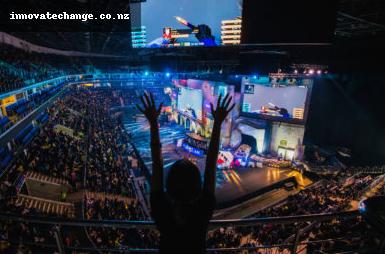Valve, the publisher of Counter-Strike: Global Offensive (CS:GO), has officially announced the upcoming launch of their new title, Counter-Strike 2 (CS2), during the summer. However, the exact release date for CS2 remains unknown. Clay Bartolo, the trading operations leader at Pandascore, raises important questions about the impact of this launch on esports and trading. The introduction of updated graphics, map adjustments, and game mechanic tweaks raises concerns about how these changes will affect the market prices. Additionally, the interaction between the game’s launch and the competitive calendar could further complicate matters. Early planning for Counter-Strike 2 includes the information that the PGL Major Copenhagen in 2024 will be the first tournament on the new CS2, indicating that we are still some time away from experiencing the new competitive environment. Despite this, there are notable features of CS2 that can be analyzed to provide insights for the future. Some anticipated changes to game mechanics include the ability to shoot through smoke grenades, slower spreading fire from Molotovs, tweaked player movement, and alterations to maps that create new dynamics and opportunities. The specific impacts of these changes on the competitive scene are challenging to predict as even small adjustments can reveal new strategies and game plans. However, with the game being available for general play before the official tournament, we will have a glimpse of the potential impact of these changes. It is clear that a team’s performance and skill in CS:GO may not necessarily carry over to CS2, considering factors such as strategic preferences, training priorities, and familiarity with the CS2 environment. The ability to adapt quickly to the changes will greatly reward teams in the initial tournaments, including the first major. Therefore, teams must decide how to handle the transition period, such as determining when to switch to the new game and whether to train for both CS:GO and CS2. The scheduling may favor underdog teams as top-tier teams will likely continue playing CS:GO until the December player break, balancing their desire to compete in the new game and maximize winnings in the remaining CS:GO tournaments. In contrast, lower-tier teams with no significant upcoming tournaments may choose to switch earlier and focus their training on CS2. These teams have the opportunity to gain an edge in the pro-CS2 scene due to more practice and familiarity with the new game. Some teams may even withdraw from CS:GO tournaments to prioritize low-tier CS2 competitions as preparation for the Regional Major Rankings qualifiers. Merely practicing in public lobbies and scrimmages will not suffice; teams will seek competitive practice to build match fitness for the major qualification. These various variables mean that traders must consider more factors than just historical data, especially when lower-tier teams already have unofficial CS2 tournaments experience. Consequently, we can expect more cautious and thoughtful approaches when it comes to pricing CS2 markets during its early days.
The Impact of Counter-Strike 2 on Esports Trading

Henri Welsh is a seasoned writer with a deep passion for the world of gambling and online gaming. With over a decade of experience in the industry, Henri has cultivated an extensive knowledge of casinos, sports betting, poker, and the rapidly evolving landscape of online gambling. His writing is marked by a keen analytical eye and a talent for breaking down complex topics into engaging, accessible content. Henri's articles provide readers with insightful strategies, industry trends, and in-depth reviews, helping both novices and seasoned players make informed decisions.
Leave a comment